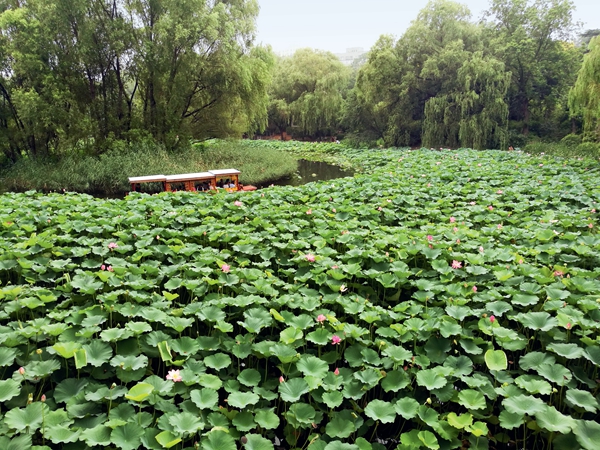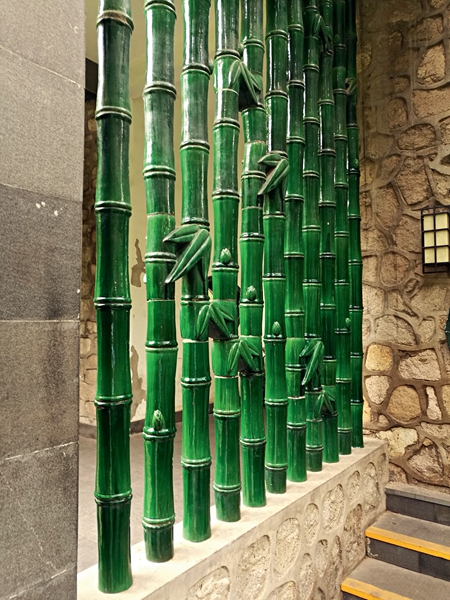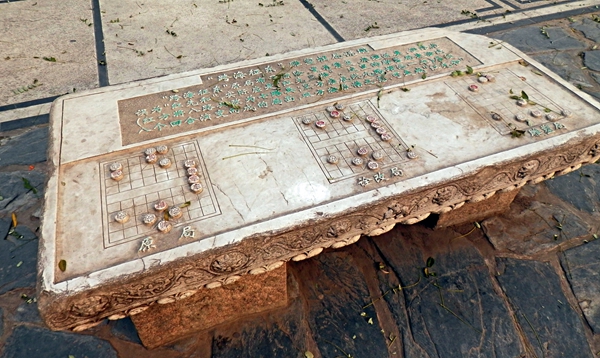Zizhuyuan – Where Purple Is the New Black!
China Today,October 20, 2017 Adjust font size:
It's no exaggeration to say that Beijingers love their parks; and one of the most popular has to be the city’s seventh largest, situated just south of the National Library and across the road from the Capital Gymnasium in Haidian District.
Purple Bamboo Park – otherwise known as Zizhuyuan – consists of 47 hectares with three connecting lakes and two small islands. The lakes’ eastern shores consist of several small hills, which were formed in the 12th century from earth dredged from the lakes, to balance the natural hills on their western shores. Stones and manmade rockeries are liberally scattered around pavilions and corridors. Zizhuyuan literally translates as Purple Bamboo Park, but confusingly the notices in English refer to it as Black Bamboo Park. The English botanist first to name this species of bamboo called it “Phyllostachys nigra” … hence its official English name.

The Purple Bamboo Park has a long history. According to early records, Zizhuyuan was a low-lying wetland. Before the third century it formed the upper reaches of the Gaoliang (Sorghum) River, and a famous Gaoliang Bridge stood nearby to the east. In the 13th century, the lakes of Purple Bamboo Park served as a reservoir, providing an important source of Beijing’s water supply. In the late Yuan Dynasty (1271-1368), the mathematician and astronomer Guo Shoujing (1231-1316) built a canal along the upper reaches of the Gaoliang River, with locks to regulate the water diverted from the White River Dam, the Jade Spring Mountain, and other nearby waterways.

During the Ming Dynasty (1368-1644) the area was a favorite spot for city folk to gather during the Tomb-sweeping Festival, when young girls would ride in horse-drawn carts, and the common people would compete in organized activities, accompanied by drums and banners. Emperor Wanli (reigned 1573-1620) built a royal garden on the banks of the lake in 1577, and that’s when the bamboo was planted.

In 1751 lakes were dug, docks and imperial palaces were built; and in 1885 the temple and palaces were upgraded and renamed Fuyin Zizhuyuan. A temple, known in the Ming Dynasty as Wanshousi (Temple of Longevity) originally stood to the northwest of the lake. Here, the Qing rulers built a palace lodge where they and their retinues could rest as they floated to the Summer Palace or the Jade Spring Mountain on the Changhe River. Nowadays, all that remains of the original temple are two stone steles and traces of two landing platforms on the banks of the river.
Although Zizhuyuan is modern by Beijing standards, the outline of today’s park actually grew up around the central Beijing terminal of the canal built to carry the influential Empress Dowager Cixi (1835-1908) to and from the Summer Palace in the northwestern outskirts of Beijing. Even now, there is still a bluestone wharf on the northeast side of Zizhuyuan and tour boats still ply the waters in the summer months carrying tourists to the Summer Palace.